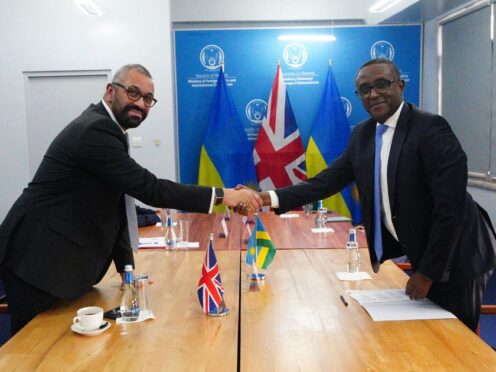During the BBC’s Prime Ministerial Debate on June 26, Sir Keir Starmer and Rishi Sunak were asked about immigration.
As Mr Sunak outlined the Conservative policy of moving illegal migrants to Rwanda, Sir Keir said: “We’ve got tens of thousands of people here who’ve come unlawfully. The Prime Minister says he’ll send them all to Rwanda. The Rwanda scheme takes a few hundred. It would take literally 300 years to get all the people who are here unlawfully to Rwanda.”
Evaluation
No flights have yet taken off to forcibly take any migrants or asylum seekers from the UK to Rwanda, so there are no “regular” statistics by which to make a judgment on how long it would take for the policy to tackle any number. Sir Keir has based on his claim on a number of mathematical assumptions which have not been verified by the Home Office.
The facts
Sir Keir’s figure of 300 years relies on two key assumptions: the number of illegal migrants and the number who would be taken to Rwanda under the scheme every year.
The Refugee Council estimated that, as of the end of March 2024, there were over 118,000 people in the asylum backlog — that is, waiting to hear if their claim for asylum will be accepted or rejected. The intention of the Rwanda plan, officially known as the Migration and Economic Development Partnership (MEDP), is to “forcibly relocate asylum seekers, people who have already been refused asylum, and other people who have made unauthorised journeys to the UK”. Theoretically, all 118,000 people could therefore be eligible for being moved to Rwanda as they are all seeking asylum.
When Boris Johnson announced the MEDP in April 2022, he made no specific promises on numbers except to say: “Rwanda will have the capacity to resettle tens of thousands of people in the years ahead”.
A newspaper report the following month claimed a Home Office report forecast 300 migrants a year would be relocated to Rwanda. The Home Office “did not recognise” the cited report and no such analysis has officially been published. If 300 people were moved under MEDP every year, it would take more than 393 years to hit 118,000, assuming there were no more who arrived during that time.
In initial discussions around the scheme, the Court of Appeal “said there was evidence of only 100 places” for relocated people to begin with, as Lord Sharpe stated in the House of Lords. Rwanda’s annual capacity has been estimated at around 100-200 people a year, which would slow the timeline even more.
When contacted for comment, the Home Office did not put a figure on current capacity but did refer to plans “to scale up provision to take in as many relocated individuals as required”.
Links
BBC iPlayer – Election 2024 – BBC Prime Ministerial Debate
UK General Election 2024: Frequently Asked Questions on Refugee and Asylum Issues – Refugee Council (archived)
UK-Rwanda Migration and Economic Development Partnership – House of Commons Library (archived)
PM speech on action to tackle illegal migration: 14 April 2022 – GOV.UK (archived)
Only 300 migrants face being sent to Rwanda each year – The Times (archived)
Rwanda Treaty – Hansard – UK Parliament (archived)
How many asylum seekers can the government’s Rwanda scheme take? – Full Fact (archived)
Safety of Rwanda (Asylum and Immigration) Bill: factsheet – GOV.UK (archived)
